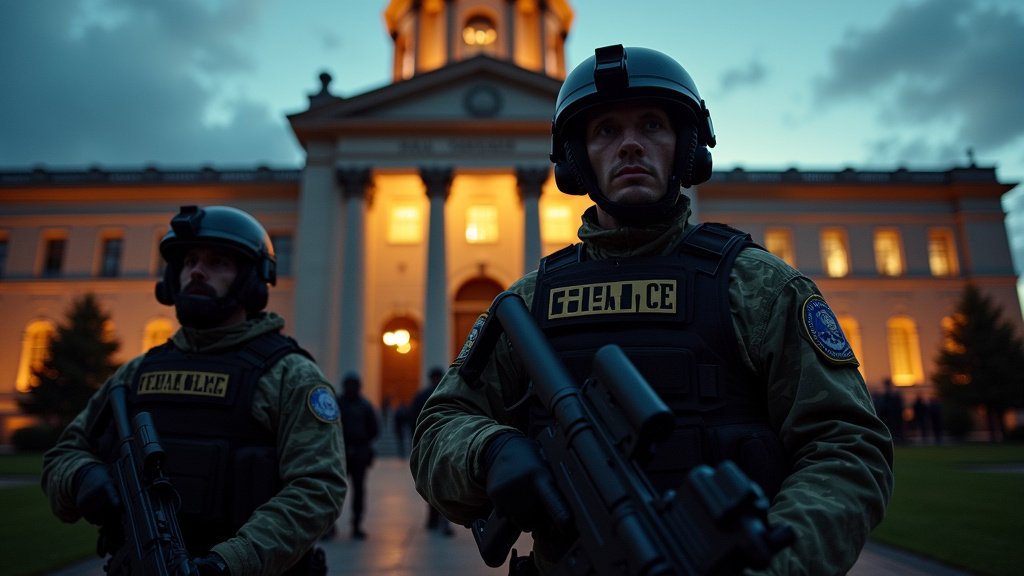In a dramatic escalation of federal intervention during the summer of 2020, President Donald Trump ordered troops to Portland, Oregon, authorizing the use of “full force” against protesters. This move, framed by the administration as necessary to combat “domestic terrorists” and protect federal facilities, ignited widespread controversy, drawing sharp rebukes from local and state officials and sparking significant legal challenges.
The Escalation in Portland
The deployment followed weeks of sustained racial justice protests in Portland, sparked by the killing of George Floyd. While demonstrations often remained peaceful, clashes with local law enforcement and acts of vandalism against federal property, particularly the Mark O. Hatfield Federal Courthouse, had become a nightly occurrence. The Trump administration, citing the need to restore order and protect federal buildings, dispatched agents from various Homeland Security components, including Customs and Border Protection (CBP), Immigration and Customs Enforcement (ICE), and the U.S. Marshals Service, under an operation known as “Operation Diligent Valor.” This intervention quickly became a focal point of the national trending news cycle.
Federal Tactics Under Scrutiny
Reports and videos emerging from Portland painted a disturbing picture of federal agents’ actions. Agents, often clad in camouflage uniforms and operating in unmarked vehicles, were accused of aggressive tactics that went beyond protecting federal property. Critically, many were observed detaining protesters blocks away from the courthouse without clear identification or explanation, actions that the American Civil Liberties Union (ACLU) of Oregon decried as “kidnapping” and “unconstitutional nightmares.” Federal agents also frequently deployed tear gas, rubber bullets, and pepper spray against demonstrators, journalists, and legal observers, leading to numerous injuries, some severe. The ACLU filed multiple lawsuits alleging excessive force and violations of constitutional rights, seeking to block these federal actions.
Outcry from Local Leaders
Oregon’s state and city leaders vehemently opposed the federal presence. Portland Mayor Ted Wheeler, who was himself tear-gassed by federal agents during a protest, described the deployment as an “abuse of federal law enforcement officials” and accused the administration of “urban warfare.” He demanded that federal troops “Keep your troops in your own buildings, or have them leave our city,” and characterized the agents as Trump’s “personal army.” Oregon Governor Kate Brown echoed these sentiments, calling the intervention a “blatant abuse of power” and “political theater” that was escalating tensions rather than resolving them. She stated that her requests for federal officers to withdraw had been ignored, suggesting a deliberate strategy by the administration to provoke confrontation.
Legal and Constitutional Challenges
The legality and constitutionality of the federal deployment were heavily questioned. A Department of Homeland Security (DHS) Office of Inspector General report later found that federal agents deployed to Portland “lacked proper training and equipment” and were “unprepared” for effective operation. Critics also pointed to concerns about the acting DHS Secretary Chad Wolf’s authority, as his appointment had been challenged in court. The lawsuits filed by the ACLU and the state of Oregon argued that federal agents exceeded their authority, encroached on state sovereignty, and violated protesters’ First and Fourth Amendment rights. While a federal judge issued orders restricting some federal actions against journalists and legal observers, the broader challenges highlighted deep-seated concerns about executive overreach.
Trump’s Rationale and Broader Strategy
President Trump defended the deployment, framing the protesters as “anarchists” and “domestic terrorists” who had turned Portland into a “war-ravaged” city. He contrasted “Operation Diligent Valor” in Portland with “Operation Legend,” a broader federal initiative focused on combating violent crime in other cities, suggesting a strategic use of federal power to project a “law and order” message. Critics, however, argued that the intervention was primarily a political tactic aimed at energizing Trump’s base and creating viral content, rather than a genuine effort to restore public safety.
Withdrawal and Lingering Questions
Under pressure from state and local officials, an agreement was eventually reached for federal law enforcement to withdraw from Portland’s streets, though they maintained a presence to protect federal property. The events in Portland, however, left a significant mark, fueling national debate about the limits of federal power in domestic law enforcement and the government’s role in managing civil unrest. The controversial deployment and the subsequent legal battles underscored the deep divisions and intense political climate gripping the nation.




